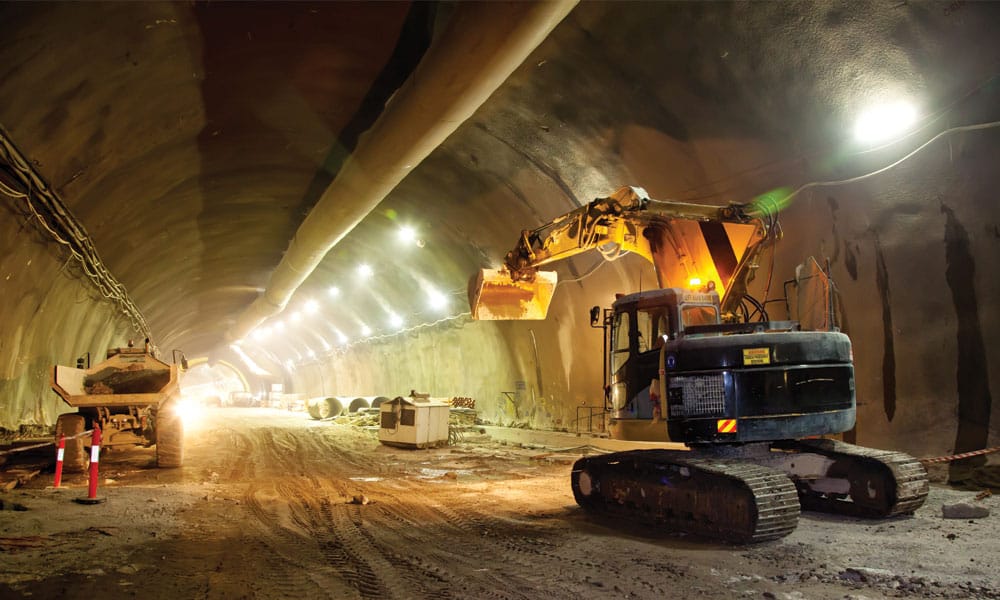Diving Into Geotechnical Providers: the Essential Role of Dirt Evaluation, Earthquake Risk Evaluation, and Geosynthetics in Structure Sustainable and Safe Structures
Soil evaluation, quake danger assessment, and the implementation of geosynthetics are important elements that guarantee the integrity and long life of buildings. By understanding the make-up of the soil, forecasting seismic dangers, and incorporating innovative products, designers can minimize dangers and enhance the strength of facilities.

Significance of Dirt Evaluation
Understanding the significance of dirt evaluation is essential in making certain the structural integrity and stability of any kind of building task. Soil analysis offers necessary details concerning the dirt composition, stamina, and prospective threats that might impact the foundation of a framework. By performing thorough soil analysis, engineers can determine the proper structure layout, building and construction approaches, and required preventative measures to minimize any potential risks.
One of the main reasons soil analysis is crucial is its function in determining soil buildings that could impact the security of a structure. Variables such as dirt bearing ability, settlement features, and water web content can dramatically affect the architectural performance of a building and construction task. Without correct dirt evaluation, the foundation may go to risk of settling erratically, causing structural damage or also collapse with time.
Furthermore, soil evaluation assists in evaluating the risk of natural disasters such as floods, earthquakes, or landslides. By understanding the dirt's habits under different problems, engineers can execute suitable measures to enhance the strength of the structure and ensure the safety of occupants. geotheta. Finally, soil evaluation is an essential action in the construction procedure that must never ever be ignored
Assessing Earthquake Dangers
Given the essential function of soil analysis in determining structural security, it is important to also examine earthquake dangers when preparation and building buildings and facilities. Quake danger evaluation includes assessing the possible seismic risks that a website might face based upon its place and geological qualities. This process assists developers and designers understand the level of threat posed by earthquakes and help in developing frameworks that can withstand such events.
Examining quake risks usually involves studying historical seismic task in the area, determining the site's closeness to fault lines, and evaluating the soil structure to forecast just how the ground will certainly react to seismic waves. By conducting a thorough earthquake risk evaluation, designers can implement suitable mitigation procedures, such as including seismic-resistant layout attributes into buildings, to enhance their durability against earthquakes.

Function of Geosynthetics
Geosynthetics play a critical duty in boosting the performance and sturdiness of civil design frameworks. One vital facet of geosynthetics is their reinforcement ability, where they can enhance the toughness of dirts, giving enhanced assistance for roadways, embankments, and preserving wall surfaces.
They are likewise used in water drainage applications to help with the efficient circulation of water, protecting against saturation and disintegration of soil. In enhancement to their technical features, geosynthetics are valued for their sustainability, as they can reduce the requirement for all-natural resources and reduced construction prices.
Building Lasting Structures
The execution here are the findings of environmentally mindful techniques in building and construction is crucial for promoting the development of lasting structures. Building lasting structures entails making use of materials and style methods that decrease environmental effect, lower power usage, and advertise long-term durability. Including sustainable methods such as making use of recycled materials, maximizing energy effectiveness, and applying green building certifications like LEED can substantially enhance the environmental performance of a framework.
One trick aspect of structure lasting structures is the effective usage of sources. This consists of developing structures that take full advantage of all-natural light, air flow, and insulation to lower the reliance on synthetic illumination, heating, and cooling down systems. Furthermore, incorporating renewable resource resources such as photovoltaic panels or wind turbines can further decrease the carbon footprint of a building while also potentially decreasing lasting power prices.
In addition, lasting frameworks typically prioritize water conservation by integrating functions like rainwater harvesting systems, low-flow fixtures, and drought-resistant landscaping. By taking on these ecologically pleasant techniques, building and construction tasks can not just minimize their environmental impact but also add to developing much healthier and a lot more durable developed atmospheres for future generations.
Ensuring Safety And Security in Building And Construction
In the world of sustainable construction techniques, a basic concern is making sure the security of all personnel associated with the structure process. Security in construction incorporates different aspects, consisting of the usage of correct individual protective equipment (PPE), adherence to security methods, routine training on hazard acknowledgment and reduction, and the execution of emergency situation action strategies. Building websites are inherently risky atmospheres, with potential hazards ranging from drops and dropping things to architectural collapses and electric this hyperlink accidents (geotheta). Consequently, it is necessary for building firms to prioritize precaution to stop accidents and injuries.

Final Thought
In verdict, dirt analysis, earthquake danger analysis, and the use of geosynthetics play critical functions in making certain the sustainability and safety of structures. By understanding the residential properties of dirt, reviewing earthquake threats, and utilizing geosynthetics for reinforcement, designers can build structures that are both durable and durable. It is critical for building and construction specialists to focus on these geotechnical solutions to produce lasting and secure buildings for the future.
Dirt analysis, earthquake risk assessment, and the implementation of geosynthetics are essential components that make sure the integrity and longevity of structures. Soil analysis gives essential information regarding the soil make-up, toughness, and prospective risks that may impact the foundation of a structure.One of the primary reasons dirt evaluation is important is its function in recognizing dirt residential properties that can influence the stability of a structure.In verdict, dirt evaluation, quake danger assessment, and the usage of geosynthetics play critical functions in making certain the sustainability and safety of frameworks. By understanding the residential properties of dirt, reviewing quake dangers, and making use of geosynthetics for reinforcement, designers can develop structures that are both resilient and sturdy.